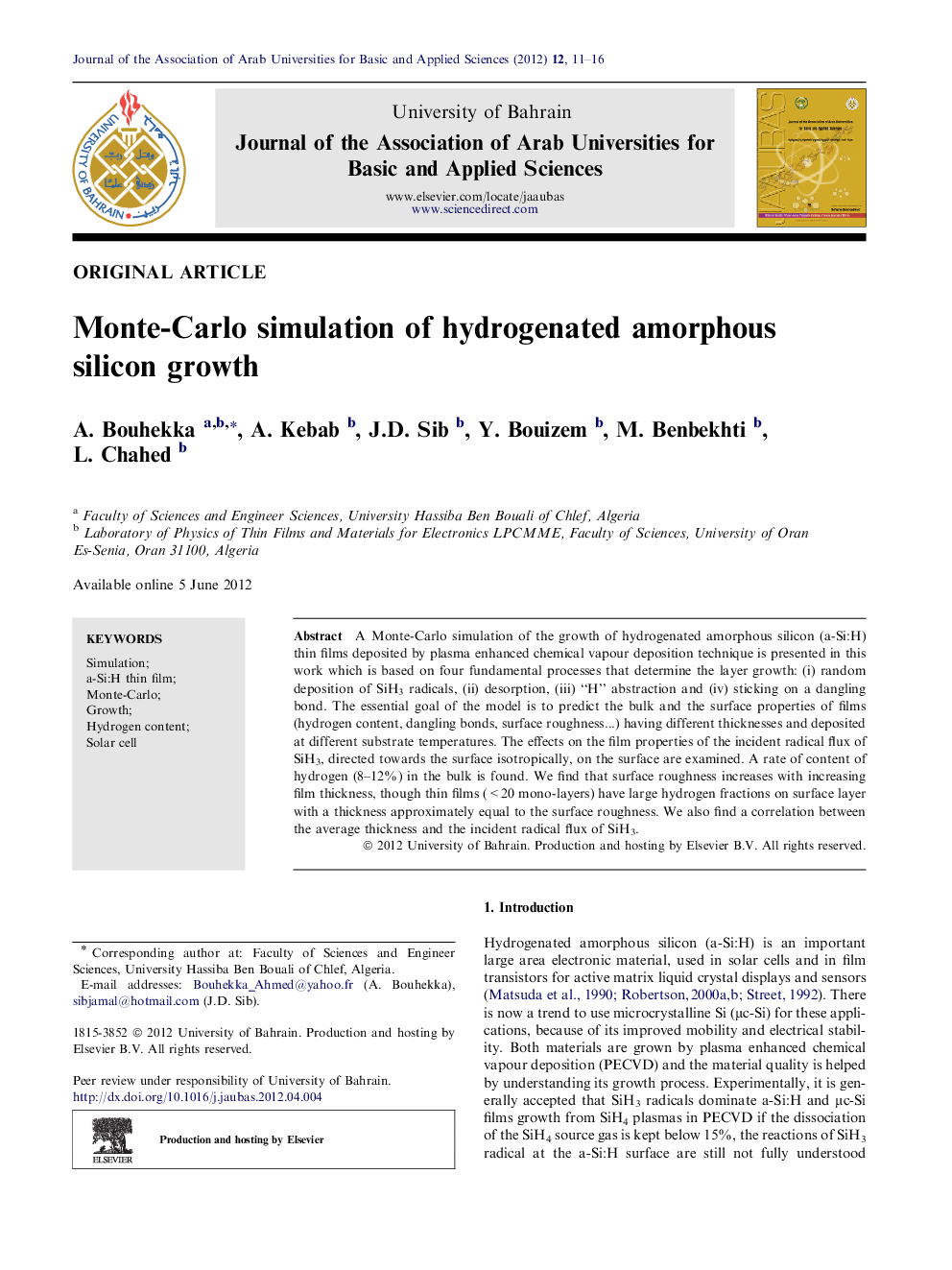| Article ID | Journal | Published Year | Pages | File Type |
|---|---|---|---|---|
| 1261207 | Journal of the Association of Arab Universities for Basic and Applied Sciences | 2012 | 6 Pages |
A Monte-Carlo simulation of the growth of hydrogenated amorphous silicon (a-Si:H) thin films deposited by plasma enhanced chemical vapour deposition technique is presented in this work which is based on four fundamental processes that determine the layer growth: (i) random deposition of SiH3 radicals, (ii) desorption, (iii) “H” abstraction and (iv) sticking on a dangling bond. The essential goal of the model is to predict the bulk and the surface properties of films (hydrogen content, dangling bonds, surface roughness...) having different thicknesses and deposited at different substrate temperatures. The effects on the film properties of the incident radical flux of SiH3, directed towards the surface isotropically, on the surface are examined. A rate of content of hydrogen (8–12%) in the bulk is found. We find that surface roughness increases with increasing film thickness, though thin films (<20 mono-layers) have large hydrogen fractions on surface layer with a thickness approximately equal to the surface roughness. We also find a correlation between the average thickness and the incident radical flux of SiH3.
